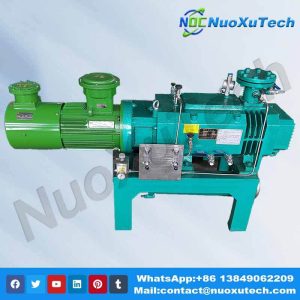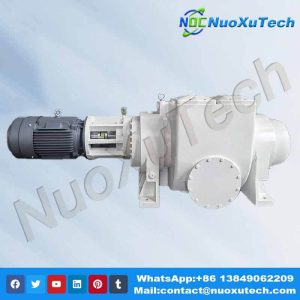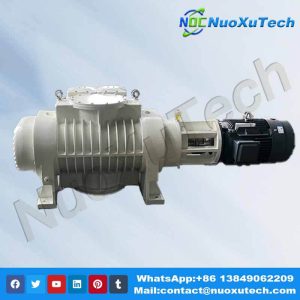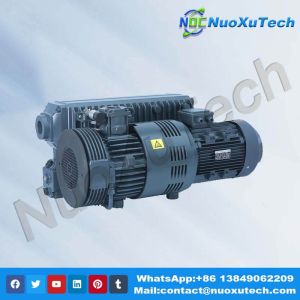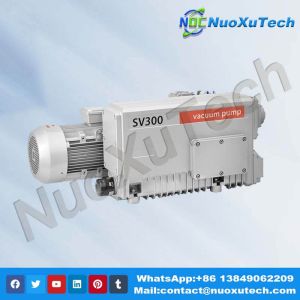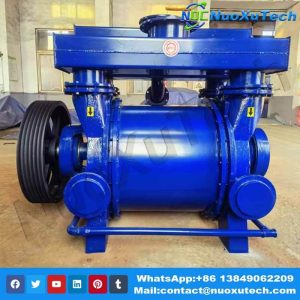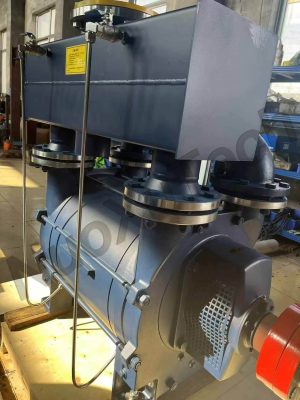What is a Roots Vacuum Pump? A Roots vacuum pump is a type of rotary volumetric pump, derived from the Roots blower design. It shares a similar structure and working principle with the Roots blower and was first developed in Germany in 1944 for use as a mechanical booster pump in vacuum smelting systems. Known for its high pumping speed, the pressure range of a Roots vacuum pump typically lies between 10 and 1000 Pa.

Types of Roots Vacuum Pumps
Roots vacuum pumps can be classified based on their operating pressure range into:
- Direct Extraction Low Vacuum Roots Pump
- Medium Vacuum Roots Pump (Mechanical Booster Pump)
- High Vacuum Roots Pump
In the domestic market, the most commonly used type is the Roots vacuum pump. These pumps are equipped with two synchronized, counter-rotating rotors that maintain minimal clearances between each other and the pump housing, ensuring they do not come into contact. The geometric symmetry of the rotors results in minimal vibration and smooth operation. Additionally, the pump chamber does not require oil sealing or lubrication, which significantly reduces friction losses, thereby lowering power consumption, allowing higher rotational speeds, and reducing oil vapor contamination within the vacuum system.
Features of the Roots Pump
The key features of the Roots vacuum pump include:
- Quick Start and Low Energy Consumption: The pump starts quickly, consumes less power, and has low operational and maintenance costs.
- High Pumping Speed and Efficiency: It delivers a large pumping speed with high efficiency, particularly in the pressure range of 100-1 Pa.
- Efficient Gas Removal: The pump can quickly evacuate sudden gas releases, with rotational speeds reaching 3450-4100 rpm and pumping speeds ranging from 30 to 10,000 liters per second.
These characteristics make Roots vacuum pumps ideal for use in conjunction with diffusion pumps and oil-sealed mechanical vacuum pumps, often functioning as mechanical booster pumps in vacuum systems.

Operation and Limitations
Roots vacuum pumps cannot operate independently and require a backing pump, such as an oil-sealed or water-ring pump, to exhaust air. The ultimate vacuum of the system is determined not only by the design and manufacturing precision of the Roots pump but also by the performance of the backing pump. Therefore, the Roots vacuum pump is generally started only after the backing pump has achieved a certain level of vacuum. This method leverages the Roots pump’s capabilities to boost vacuum efficiency.
When selecting a Roots vacuum pump, it’s crucial to ensure that its pumping speed is at least double but not more than ten times that of the backing pump. This ensures that the pump operates effectively without overloading or underperforming.
Applications of Roots Pumps
Roots vacuum pumps are widely used across various industries for applications such as:
- Vacuum Metallurgy and Smelting
- Degassing
- Rolling and Chemical Processing
- Vacuum Distillation
- Vacuum Concentration
- Vacuum Drying in the Food and Pharmaceutical Industries
Roots pumps, with their efficient and high-speed operation, are essential components in vacuum metallurgy, chemical processing, and other industrial applications requiring reliable vacuum performance. This article explores the types, features, operation, and wide-ranging applications of Roots vacuum pumps, emphasizing their role in enhancing vacuum systems.

Contact us
For more information about Roots Vacuum Pump, Contact Nuoxutech
Mail: contact@nuoxutech.com
WhatsApp: +86 13849062209
Blogger: nuoxutech.blogspot.com
Our team is ready to provide you with professional service and support.
Keywords
Roots Vacuum Pump, What is a Roots Vacuum Pump, Roots Vacuum Pump Explained, NuoXuTech, Roots Vacuum Technology, High-Speed Pumping, What does a Roots vacuum pump do and how does it work, zjp ,zj , zj roots pump, Applications of Roots vacuum pumps in industrial settings, China Manufacturing, ZJPSeries, What is a Roots Vacuum Pump
(The article comes from the Internet. If reprinting is not allowed, please contact our company to delete it.)

